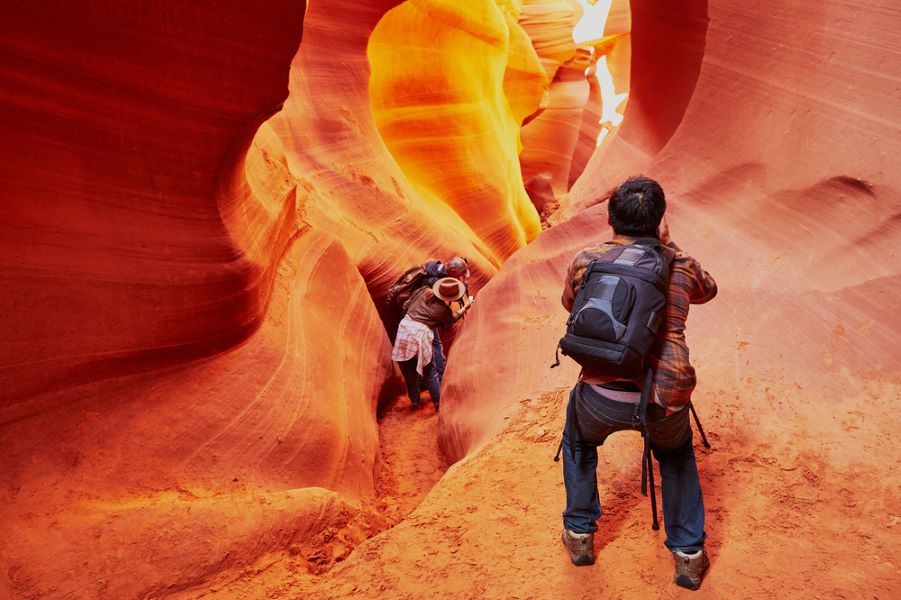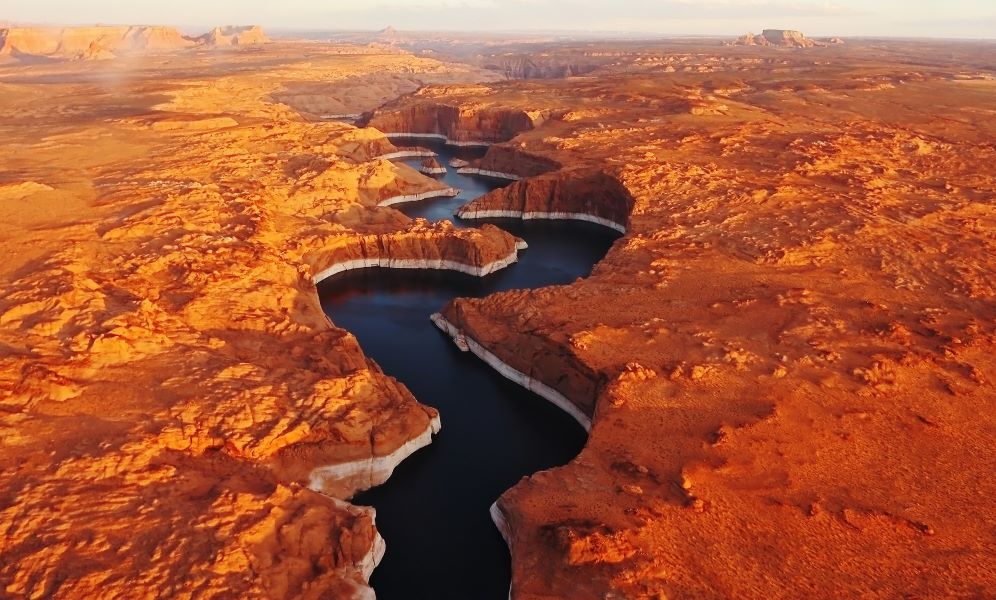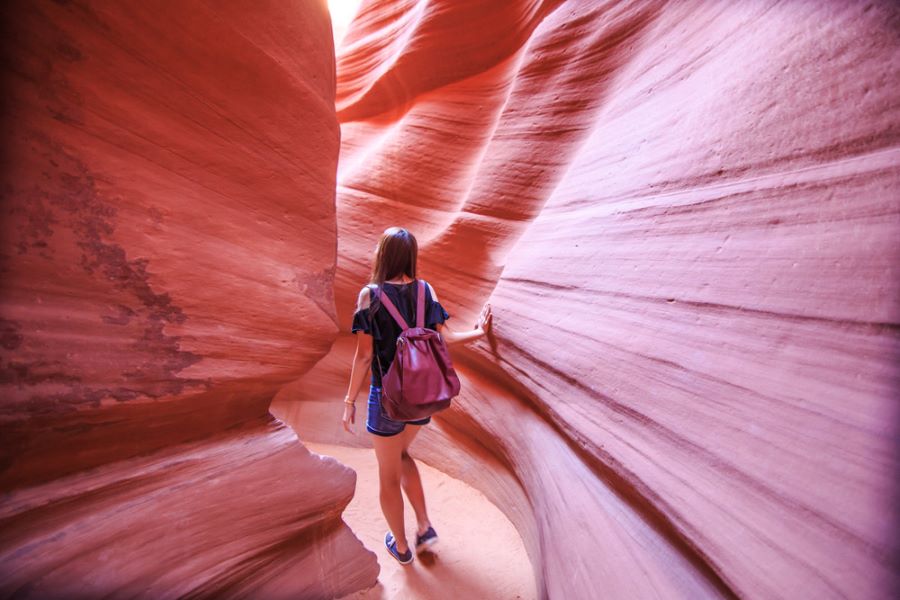Antelope Canyon is a breathtaking slot canyon located near Page, Arizona, about 300 miles north of Phoenix. The canyon is renowned for its striking wave-like structure and narrow passages. This natural wonder, carved from the red Navajo Sandstone by millennia of water erosion, has become a sought-after destination for photographers and nature enthusiasts alike.
The history of Antelope Canyon is deeply intertwined with the Navajo Nation, on whose land the canyon is situated. The Navajo name for Upper Antelope Canyon is “Tsé bighánílíní,” which translates to “the place where water runs through rocks.” This name highlights the primary force behind the canyon’s creation: flash floods. Over thousands of years, periodic flooding from monsoon rains has carved out the smooth, flowing shapes that characterize the canyon walls. These floods continue to shape and alter the canyon, reminding visitors of nature’s relentless and transformative power.

Antelope Canyon, Arizona
Antelope Canyon is divided into two main sections: Upper Antelope Canyon, known as “The Crack,” and Lower Antelope Canyon, referred to as “The Corkscrew.” Upper Antelope Canyon is the more accessible of the two and is particularly famous for its light beams that occur primarily during the summer months. These beams of sunlight filter through the narrow openings at the top of the canyon, creating ethereal and otherworldly visual effects that are an Instagrammer’s dream. Lower Antelope Canyon, while less frequented, offers a more challenging trek with ladders and narrow passages, rewarding visitors with equally stunning views but smaller crowds.
Getting to Antelope Canyon requires a bit of planning. The nearest town, Page, Arizona, serves as the primary gateway for visitors. Page is accessible by car via U.S. Route 89, and the closest major airport is in Flagstaff, about a two-hour drive away. Many visitors opt to fly into Las Vegas or Phoenix, both approximately a four- to five-hour drive from Page.
Once you’re in Page, guided tours are the only way to visit Antelope Canyon, as it is located on Navajo land and entry without a guide is prohibited. Several local companies offer tours that provide transport to and from the canyon, ensuring that visitors can safely and respectfully experience this natural marvel.

Lake Powell, Antelope Canyon, Arizona
The visitor experience at Antelope Canyon is carefully managed to preserve its delicate ecosystem and to respect the cultural significance of the site. Tours are conducted by knowledgeable Navajo guides who share the geological and cultural history of the canyon, enhancing the visitor’s appreciation of its beauty and importance. These guides also help visitors capture the perfect photograph, pointing out the best angles and times of day to witness the canyon’s famed light beams.
Visitors to Antelope Canyon can expect awe-inspiring experience. The canyon’s narrow passages and towering walls create an intimate atmosphere, allowing individuals to connect deeply with the natural world. The interplay of light and shadow on the red sandstone walls creates a mesmerizing display of colors and patterns that change throughout the day, making each visit unique. While the canyon can be crowded, especially during peak tourist seasons, the beauty and tranquility of the space often leave a lasting impression on those who make the journey.
You Might Also Enjoy: Offbeat Travel: Wave Rock in Hyden, Australia

Antelope Canyon is a testament to the power and beauty of nature, offering visitors a chance to witness one of the Earth’s most remarkable geological formations. Its history, shaped by the forces of water and the stewardship of the Navajo people, adds layers of significance to the experience. For those seeking an unforgettable adventure and a chance to capture some of the most stunning natural photographs, Antelope Canyon is an essential destination.
Have you ever been to Antelope Canyon? Tell us about it in the comments below!


Leave a Reply